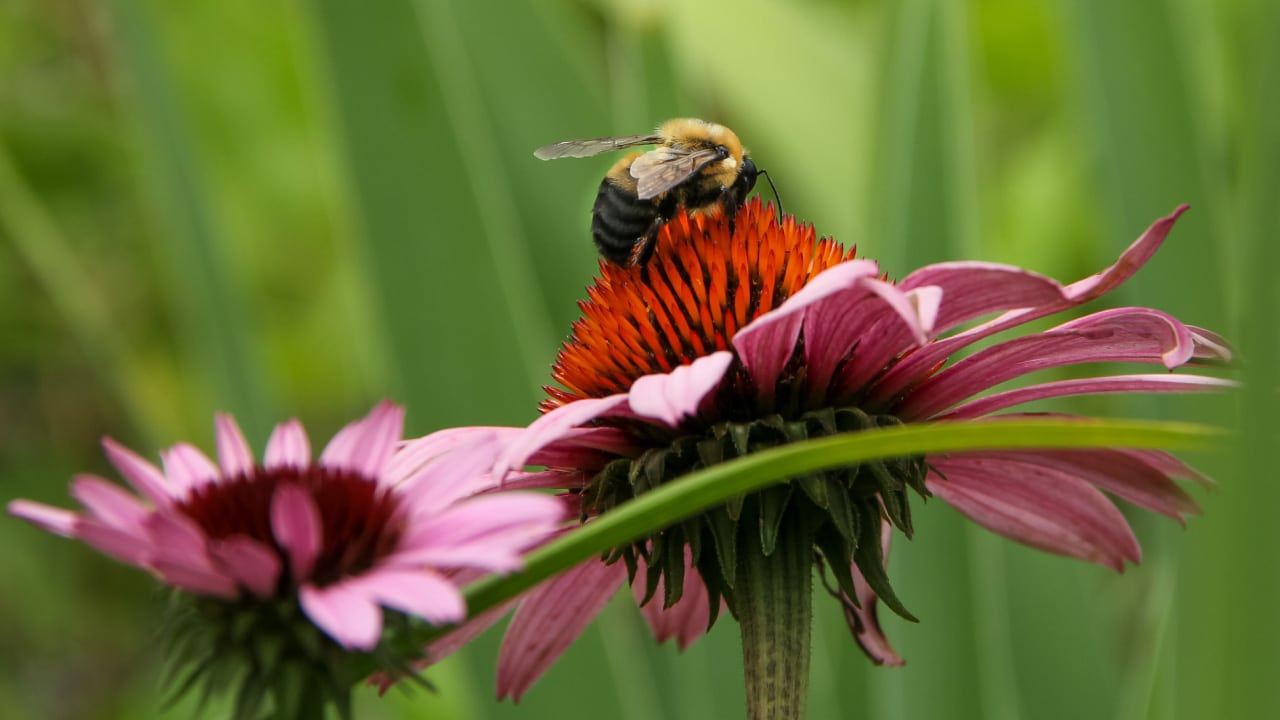
Our Tips For Cultivating a Pollinator-Friendly Yard
Your house is a home. Well, obviously you knew that. But your house — and your lawn — is home to more than just you and your family; you are part of a larger ecosystem, with bees, birds, squirrels, bugs, and other critters living everywhere around you!
Growing a biodiverse lawn is a noble cause and one we have seen grow in popularity in recent years. Minnesota encourages residents to plant native flowers and grasses to create a biodiverse lawn and support the natural ecosystem around us. But many, despite being interested, struggle getting started.
With a few tips and some fresh dirt (and native grass seed), you can become a champion of biodiversity in your neighborhood.
Grow Diverse Native Plants
Growing pollinator-friendly yards begins with focusing on what you are planting in your yard and garden. Wildflower gardens in Minnesota provide a plume of color and biodiversity for healthy insects and other native species.
Grasses and plants that are native to Minnesota can be planted throughout your yard and garden to create a biodiverse lawn and help the environment. Native plants grow better than some imported species and can make your lawn look great. If you want to begin creating pollinator-friendly yards, start by focusing on what is planted, and how you can support the native habitats and living environments.
Plant a Bee Lawn
Bee lawns are cultivated to aid in natural pollination. Planting bee-friendly grass and plants that include plenty of nectar and pollen creates a thriving ecosystem of bees and other pollinators.
The nice thing about a bee lawn is that it looks very similar to a more traditional lawn, with similar grasses and attractive flowers. Pollinator-friendly yards simply consist of plants that contain nutrients and food for good, healthy insects.
Mow Your Lawn Less Frequently
Another tip to grow pollinator-friendly yards is to mow less frequently. While this can be difficult at first, once you remember you are mowing down the pollinators’ habitats, it can get easier. Mowing less also becomes easier when you have less grass to mow.
The best part is you don’t have to completely replace your entire lawn with flowers and tall grasses. Including sections of native grass and plants throughout your yard or garden that contain healthy habitats is a great start.
Focusing on the status and quality of your lawn care can help create a biodiverse lawn without sacrificing the look you have come to love for your home.
Reduce Pesticides
Insect control is a delicate balance for cultivating a healthy, biodiverse lawn. The trick is to understand which bugs are good and which are bad.
If you want to get rid of the bad bugs in your yard, using pesticides may seem like the easy solution. However, it can damage the ecosystem and threaten the quality of your carefully cultivated pollinator-friendly area. Scheduling lawn fertilizer service can also help reduce harmful pesticides while still controlling bugs.
You can take other approaches — such as water control, grass control and good bug control — to limit the use of pesticides and reduce unwanted bug populations in your yard.
Team Up With a Trusted Lawn Care Expert
Creating pollinator-friendly yards is ecologically responsible and a great way to connect with your yard. We laud you for taking the first step in growing a biodiverse lawn, and we’re committed to helping you along the way.
Whether you are looking for assistance with lawn care, lawn fertilizer service or more tips, contact the team at Scott’s Lawn Care. We know yards, and our home lawn care services make growing and maintaining your pollinator-friendly lawn a breeze.
